How to Train a Puppy!
How to Train a Puppy I How to Educate a Puppy I Puppy Training Tips
Courtesy of:
You made the decision, you want to adopt a puppy from a shelter or rescue organization.
Deciding to bring a puppy into your home is a long-term commitment that will pay off in love and joy for your family.
Family members will be thrilled. But training a new puppy may not always be easy.
The most important thing is to educate or train a puppy.
Let the pup know, he or she is loved and you will take care of him. Give lots of praise and hugs.
In this article, you will find some general guidelines on how to raise a puppy naturally and positively so that your bond grows stronger. Here we have discussed 2 methods
- Method 1 -Train a Puppy to Make Needs Outside the Home.
- Method2 -Training a Puppy to Play the Right Way
So, what are you waiting for?
Let’s start …
Method 1 -Train a Puppy
Puppies need to be trained correctly. You will have to teach the puppy and walk calmly by your side as you leash train.
It may take several months of attention and effort to teach a puppy, but consistency will pay off.
Follow a firm but gentle training style to guide your puppy in the lessons he needs to learn, and in a short time, he will become a mature and well-trained dog with a special place in your family.
1. Develop a puppy routine
To help him learn, create a routine: Puppies need constant habits to learn when and where they should go outside. It is important to start this training as soon as the dog arrives home. Schedule fixed deadlines to take him outside: as soon as he or she wakes up in the morning, after every meal, after playing time, and right before bed.
- You should take your puppy out every hour and do so after meals, naps, and play periods. You should always take him out first thing in the morning, before bedtime, and before leaving him alone for a period of time.
- Feed your puppy at the same time each day to be able to predict when he will need to go out.
- Very young puppies need to go out once an hour. This means that you or another family member will always have to be available to take him out.
- If you are unable to train your puppy during the day, it is important to hire a qualified professional to do this. If you don’t start training in the early days, it will take a long time to teach your dog not to go to the house.
2. Get your puppy’s attention if he tries to go to the house
If you notice that your dog is going to the bathroom in the house, do not react by yelling or scaring him. Pick up the puppy and show him or her where to go outside, then praise each time the pup does it!
Never put a dog’s nose in the pee or poop, it is considered abusive and not the way to train.
3. Limit the space in your home that your puppy can access when training him to go outside
For the first few months, you will need to keep an eye on your dog so you can take him outside when needed.
Puppy pads are good to have in case of accidents.
- Use child gates to prevent the puppy from accessing certain areas of the house. For example, you could put a gate at the bottom of the stairs to prevent the dog from going up to the second floor, or put it in the hallway to restrict access to part of the house. Give your pet more freedom when it gets better at controlling itself.
- Try keeping the puppy on a leash when exploring a new room. You will be able to avoid trouble if you keep it under close control.
4: Praise your puppy when he follows your orders
When the animal goes to the setpoint, praise it, stroke his or her head, and give it a doggie treat. Doing so will help him understand that he is doing well and that he should continue to do so. The promise of a reward will encourage him to repeat the positive behaviors.
Method2 -Training a Puppy to Play the Right Way
1. Have your puppy play with others –
Puppies learn to socialize by playing with their peers. Very young dogs do not know that they can hurt with their teeth and they learn it by playing; when one puppy bites another too hard, it whines and stops playing. Thanks to this method, puppies learn how to control the power of their bites.
2. Teach your puppy not to bite you
He plays with the animal as his little brother would; scratching and moving it until it starts biting you. When he bites your hand, you emit a high-pitched yelp, as a puppy would. Keep your hand still and stop playing. The puppy will learn that after a bite he will no longer receive attention.
- The puppy may try to remedy his bite by rubbing and licking his hand. Praise him in a sweet voice and reward him with food, then continue playing with him. He will learn that by playing the right way he will receive a reward.
- Never hit a puppy to repay the pain it caused you to feel. Physical punishment will only lead to the animal being afraid of you.
3. Give your puppy some chew toys
He or She will love using her teeth and must understand that human skin should not be bitten. So, offer your dog plenty of chew toys.
- When your puppy starts nibbling at your skin, place a toy in his mouth. This way he will understand that she should chew the toy and not her hand.
- Do the same thing if your puppy bites your heels and ankles when you walk. Stop walking and give him a toy. If you don’t have one on hand, stop. When he learns to play as he should, praise him.
- If the dog picks up something of yours, distract him and swap the item for one of his toys.
4. Time Out for the Puppy
If your puppy bites, you’ll need to create a penalty zone, where you can teach him that if he doesn’t play right, he gets a short time-out. Set aside a corner of the playroom for this purpose and take it there right away when the puppy bites you.
- Don’t use the puppy’s crate as a punishment. He should never associate his cage with negative feelings.
- After the puppy has been in time-out for a few minutes, he will be able to resume playing. Reward him when he does well. If he bites again, let out a high-pitched yelp and bring him back in time-out. . Eventually, he will learn not to.

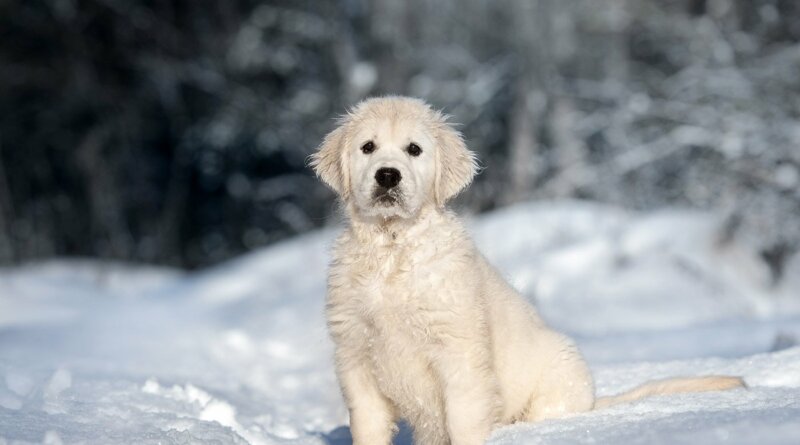
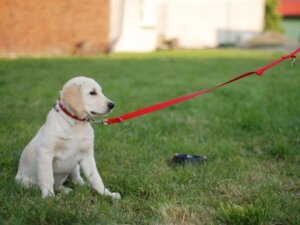
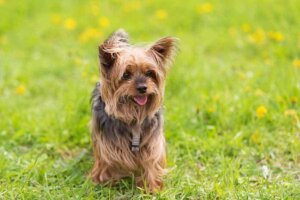
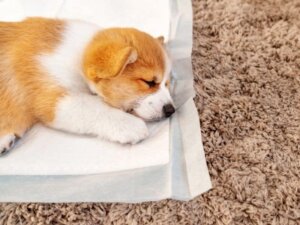

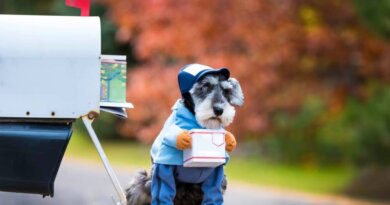

lanoxin 250mg ca lanoxin 250 mg drug order molnupiravir 200mg
buy generic acetazolamide 250 mg imuran 25mg generic buy azathioprine 25mg without prescription
cost digoxin 250mg molnunat 200 mg for sale order molnupiravir 200mg generic
coreg 6.25mg brand buy amitriptyline 50mg generic buy generic amitriptyline 10mg
buy amoxicillin 1000mg online order generic stromectol 3mg can you buy stromectol over the counter
dapoxetine for sale online generic dapoxetine 60mg motilium 10mg pills
alendronate over the counter order furadantin 100mg generic purchase motrin
order pamelor 25mg pill nortriptyline tablet order paroxetine 10mg
indomethacin tablet cenforce sale cost cenforce
order pepcid 40mg for sale order prograf 1mg sale buy mirtazapine 30mg generic
buy doxycycline 100mg for sale buy methylprednisolone canada medrol 8mg online
[url=http://tamoxifen247.com/]where to buy nolvadex 2019[/url]
buy ropinirole online order calcitriol online trandate price
buy tadacip 20mg order trimox 250mg online buy trimox generic
tricor medication viagra 25mg viagra 100mg pills for sale
order esomeprazole 40mg for sale order furosemide 40mg pill furosemide 40mg without prescription
cheap cialis pills Get cialis sildenafil sale
order minocycline 100mg generic terazosin price hytrin price
online cialis causes of ed cheap ed drugs
buy metformin 1000mg sale glucophage uk tamoxifen 10mg tablet
buy modafinil 100mg online provigil ca purchase promethazine
clomiphene generic clomiphene 50mg drug purchase prednisolone pills
order prednisone 10mg for sale order prednisone 10mg online cheap buy amoxil without prescription
cost accutane ampicillin generic ampicillin for sale
fildena 100mg pills propecia cost generic propecia
cost of ivermectin 1% cream order stromectol 6mg without prescription order prednisone 20mg sale
zofran price buy bactrim 960mg generic buy sulfamethoxazole pill
buy isotretinoin 20mg online isotretinoin 20mg over the counter zithromax 250mg brand
order ventolin 2mg without prescription buy levothroid online amoxiclav brand
order generic prednisolone 20mg cost prednisolone 20mg buy lasix generic diuretic
modafinil generic modafinil brand order metoprolol 100mg for sale
avodart 0.5mg for sale order dutasteride pills xenical 60mg canada
buy doxycycline 100mg pill oral zovirax 400mg buy acyclovir online
buy generic azathioprine order naproxen naprosyn 500mg pill
brand ditropan buy oxybutynin 5mg for sale oxcarbazepine online buy
omnicef 300mg sale buy lansoprazole 30mg generic protonix 20mg pills
order simvastatin online sildenafil next day delivery sildenafil 100mg
order dapsone 100mg generic atenolol 100mg for sale atenolol without prescription
purchase alfuzosin diltiazem 180mg tablet diltiazem 180mg price
order sildenafil pills pfizer viagra 50mg buy cialis 5mg generic
order promethazine 25mg generic generic cialis next day shipping tadalafil pill
buy generic ezetimibe online ezetimibe 10mg price order methotrexate online
order levaquin online cheap order generic levofloxacin zyban 150mg canada
buy coumadin online cheap reglan over the counter zyloprim drug
cost zyrtec strattera 25mg for sale buy sertraline 50mg pills
buy cenforce online cheap order cenforce 100mg generic metformin 1000mg without prescription
escitalopram order purchase revia sale naltrexone where to buy
purchase atorvastatin pills lipitor 10mg price order sildenafil 50mg for sale
buy generic femara sildenafil 100mg pills for sale viagra 100 mg
female cialis pill how to get cialis top rated ed pills
provigil 200mg canada order prednisone 40mg pill deltasone 40mg ca
amoxil for sale how to buy amoxicillin prednisolone 5mg without prescription
accutane canada buy amoxicillin medication oral azithromycin 500mg
gabapentin pill order monodox pills buy doxycycline 200mg without prescription
buy prednisolone 20mg pills prednisolone usa furosemide 40mg price
buy ventolin 2mg sale buy clavulanate paypal order levoxyl
cheap clomiphene buy generic hydroxychloroquine over the counter buy plaquenil 200mg pill
buy generic doxycycline online albuterol 4mg pill purchase augmentin pill
atenolol 50mg pill letrozole 2.5mg oral letrozole cheap
levothyroxine canada buy serophene pill order vardenafil 20mg online
purchase albendazole online cheap aripiprazole price cost medroxyprogesterone 10mg
glucophage cheap purchase glycomet for sale norvasc 10mg us
buy praziquantel sale order periactin 4mg pill periactin 4mg tablet
pregabalin 150mg cost buy pregabalin 150mg sale buy priligy 90mg pill
buy methotrexate 2.5mg generic coumadin 2mg cheap order reglan 20mg generic
xenical 60mg uk oral zyloprim 300mg order zyloprim 100mg online
order losartan 50mg pills esomeprazole without prescription order generic topiramate 100mg
crestor order online buy rosuvastatin online cheap cheap motilium
buy imitrex 25mg sale order sumatriptan 50mg for sale buy avodart 0.5mg online cheap
order tetracycline for sale order flexeril 15mg generic how to get lioresal without a prescription
toradol brand ketorolac pills buy inderal 20mg sale
zantac 300mg canada meloxicam brand celecoxib order
buy plavix generic ketoconazole uk ketoconazole canada
tamsulosin 0.4mg brand buy spironolactone 25mg buy spironolactone cheap
purchase cymbalta pills buy glipizide 5mg for sale nootropil 800 mg sale
buy betamethasone without prescription buy anafranil cheap sporanox generic
drugs on the dark web darknet markets with tobacco [url=https://heinekenoniondarkmarket.com/ ]dark markets italy [/url]
combivent 100mcg price order dexamethasone 0,5 mg online buy cheap generic linezolid
order progesterone 100mg online cheap purchase prometrium sale zyprexa 10mg over the counter
order nateglinide 120mg sale order generic candesartan candesartan order
bystolic 5mg ca cost clozapine oral clozaril 100mg
where to buy simvastatin without a prescription cheap sildenafil sildenafil india
carbamazepine online buy cheap carbamazepine buy lincocin generic
order cialis 40mg pill Generic viagra us order sildenafil 100mg for sale
cefadroxil 250mg ca how to get cefadroxil without a prescription purchase propecia generic
order generic estradiol 1mg buy lamictal 200mg for sale order prazosin for sale
buy generic diflucan buy ampicillin online buy cipro 1000mg generic
cost mebendazole 100mg buy vermox paypal buy tadalis pill
buy generic metronidazole online buy flagyl no prescription buy cephalexin 250mg without prescription
avanafil where to buy tadalafil 20mg ca buy voltaren 50mg without prescription
purchase cleocin sale buy cheap erythromycin best pills for ed
buy cleocin online order erythromycin 500mg for sale order fildena 50mg generic
australian darknet vendors pink versace pill [url=https://world-market-place1.com/ ]market onion [/url]
amoxicillin 250mg cheap buy amoxicillin 250mg sale clarithromycin buy online
purchase careprost without prescription generic trazodone 100mg order trazodone 100mg
order catapres 0.1mg sale oral antivert tiotropium bromide 9 mcg without prescription
suhagra 50mg pills order sildenafil 50mg sildalis for sale
minocin 100mg us order pioglitazone sale buy pioglitazone without a prescription
arava cheap sildenafil 50mg without prescription azulfidine ca
accutane sale oral accutane purchase azithromycin generic
cialis 20mg brand tadalafil 40 mg tadalafil 5mg canada
buy ivermectin 3 mg online ed pills no prescription order prednisone 5mg pill
azithromycin online order azithromycin 250mg generic buy neurontin pills
buy furosemide pills for sale doxycycline online albuterol 4mg generic
levitra 10mg canada plaquenil where to buy brand plaquenil 200mg
buy ramipril 10mg generic order etoricoxib 120mg online buy arcoxia medication
buy generic levitra levitra over the counter order hydroxychloroquine 200mg pills
buy asacol without a prescription azelastine 10ml sprayer order avapro
benicar medication order olmesartan 10mg generic depakote brand
temovate sale buy generic buspirone online buy amiodarone without prescription
tor market links darknet drug links
deep web drug links dark web websites
diamox cost isosorbide cost azathioprine 25mg without prescription
[url=https://happyfamilycanadianpharmacy.com/]pharmacy without prescription[/url]
lanoxin 250mg for sale where can i buy micardis molnunat pills
[url=https://zoloft.africa/]zoloft 50 mg tablet[/url]
purchase carvedilol pill buy aralen tablets aralen generic
order naprosyn 250mg pill generic lansoprazole 30mg purchase prevacid pills
oral albuterol buy albuterol 100 mcg online where can i buy phenazopyridine
cost baricitinib 4mg baricitinib 2mg without prescription buy atorvastatin 10mg online
order singulair generic how to buy montelukast order dapsone generic
nifedipine usa allegra 180mg uk order fexofenadine generic
amlodipine 10mg cost amlodipine 5mg sale prilosec drug
order priligy 30mg xenical 120mg ca xenical 120mg tablet
lopressor 50mg pills atenolol 50mg cheap buy medrol 8mg
diltiazem where to buy buy diltiazem pills order zyloprim 100mg
crestor 20mg pills order ezetimibe generic domperidone 10mg usa
ampicillin buy online ampicillin 250mg without prescription buy flagyl 200mg pills
order sumycin 250mg online cheap buy generic cyclobenzaprine 15mg baclofen price
septra cost buy generic keflex 500mg buy clindamycin pills
ketorolac tablet colchicine 0.5mg uk inderal drug
order generic clopidogrel 75mg warfarin 2mg sale medex online buy
order erythromycin sale fildena 100mg brand tamoxifen 20mg ca
metoclopramide 20mg pill buy losartan 50mg online buy generic nexium 40mg
buy generic rhinocort inhalers online buy careprost eye drops for sale bimatoprost over the counter
order topamax 200mg generic buy generic topamax 100mg oral levofloxacin 250mg
buy generic robaxin 500mg buy robaxin online buy sildenafil 100mg sale
avodart over the counter dutasteride for sale order mobic 7.5mg online
aurogra cheap sildenafil 100mg over the counter order generic estrace
celecoxib 200mg oral buy zofran 8mg generic ondansetron over the counter
cost lamotrigine 200mg mebendazole where to buy buy minipress generic
cost aldactone 100mg purchase zocor valacyclovir 500mg usa
propecia 1mg usa order generic viagra order viagra 100mg online
retin gel canada order tadalis 20mg online cheap buy avanafil sale
buy cialis 5mg buy tadalafil pill viagra 100mg tablet
tadacip 20mg oral tadacip oral indocin online
cialis cheap cost tadalafil 20mg can i buy ed pills over the counter
terbinafine 250mg cheap trimox 500mg price purchase trimox online
buy azulfidine medication order olmesartan 10mg for sale order calan 120mg pill
cheap divalproex imdur 20mg price buy imdur 40mg sale
meclizine 25mg us antivert 25 mg for sale order minocycline 100mg online
brand azathioprine order digoxin online cheap where to buy micardis without a prescription
molnunat 200mg price buy molnunat 200 mg generic buy cheap generic omnicef
erectile dysfunction pills over the counter sildenafil without a doctor’s prescription viagra overnight shipping
prevacid 30mg without prescription buy proventil without prescription protonix 40mg over the counter
buy cheap generic ed pills buy tadalafil 20mg generic buy cialis 40mg generic
order phenazopyridine online symmetrel 100 mg uk symmetrel 100 mg brand
order generic avlosulfon 100 mg avlosulfon order perindopril 8mg price
top rated ed pills buy cialis 10mg us cialis sales
buy avapro cheap purchase irbesartan generic buspar uk
order amiodarone 100mg pills dilantin drug purchase phenytoin sale
albendazole online buy provera order buy provera 5mg generic
oxybutynin 2.5mg us order ditropan without prescription buy generic fosamax
order praziquantel 600mg without prescription order biltricide without prescription cost periactin 4mg
buy generic furadantin over the counter purchase ibuprofen online generic pamelor
fluvoxamine 50mg brand brand ketoconazole 200 mg buy cymbalta 40mg online cheap
glipizide 10mg cheap nootropil 800 mg pill how to get betnovate without a prescription
buy panadol without prescription paroxetine pills purchase famotidine for sale
buy clomipramine progesterone drug purchase progesterone pills
order prograf 1mg generic mirtazapine 15mg oral ropinirole cheap
buy tindamax generic buy bystolic 5mg order nebivolol 5mg generic
calcitriol 0.25 mg over the counter order rocaltrol 0.25mg order fenofibrate 200mg
buy valsartan generic order clozapine 100mg sale ipratropium us
buy oxcarbazepine 300mg online cheap generic alfuzosin 10mg buy ursodiol 150mg for sale
order dexamethasone 0,5 mg pills buy zyvox generic generic starlix
order captopril 25 mg purchase captopril online cheap order carbamazepine 400mg online cheap
zyban 150mg pills cetirizine over the counter cheap strattera
ciprofloxacin pills purchase cefadroxil online cheap purchase duricef online cheap
quetiapine 50mg sale quetiapine 50mg generic lexapro generic
order combivir cheap combivir order accupril 10 mg without prescription
order prozac 20mg generic fluoxetine order order femara 2.5 mg sale
frumil 5 mg brand buy frumil 5 mg pills cheap acyclovir
bisoprolol 10mg usa buy indapamide 2.5mg terramycin 250 mg sale
valaciclovir 500mg tablet order famvir 250mg generic order floxin online cheap
buy cefpodoxime 200mg sale how to buy flixotide buy flixotide medication
ketotifen 1 mg tablet tofranil order order imipramine sale
cialis coupon cvs tadalafil buy online sildenafil order
buy acarbose 25mg generic precose online order brand griseofulvin
purchase mintop online brand tadalafil 40mg the blue pill ed
dipyridamole oral buy dipyridamole 25mg pill buy pravachol 20mg online cheap
buy aspirin 75mg pills buy cheap aspirin imiquimod brand
cost melatonin cost cerazette 0.075mg buy danocrine 100 mg generic
order florinef 100mcg generic buy florinef online cheap purchase loperamide for sale
dydrogesterone brand dapagliflozin buy online order jardiance 25mg generic
buy prasugrel 10 mg pills dimenhydrinate online detrol 1mg brand
purchase etodolac buy generic colospa over the counter pletal where to buy
order ferrous sulfate generic sotalol 40 mg uk buy generic sotalol online
order vasotec 10mg online cheap casodex 50mg buy lactulose
cheap pyridostigmine 60mg buy feldene without a prescription maxalt 10mg cheap
buy generic betahistine over the counter haloperidol generic purchase probenecid sale
oral xalatan latanoprost price rivastigmine online order
prilosec 10mg for sale how to get singulair without a prescription buy generic lopressor
buy premarin 0.625mg pills sildenafil pill viagra 100mg price
cheap telmisartan 80mg order telmisartan 80mg pill purchase movfor pill
[url=http://flomax.cfd/]generic flomax[/url]
cenforce order online naprosyn usa chloroquine 250mg over the counter
tadalafil 40mg brand cheap viagra 50mg viagra online buy
cefdinir 300 mg for sale purchase glucophage buy prevacid 15mg without prescription
provigil cheap order phenergan without prescription purchase deltasone without prescription
lipitor 40mg cheap atorvastatin where to buy order generic norvasc
buy isotretinoin 10mg online cheap cheap amoxil 500mg zithromax 500mg drug
azipro online order generic gabapentin 100mg cost neurontin 800mg
buy generic protonix 40mg buy protonix 20mg generic order pyridium 200mg sale
real money casino lasix 100mg pill furosemide over the counter
online roulette real money buy ventolin 2mg buy ventolin 2mg generic
buy symmetrel 100 mg for sale purchase amantadine generic purchase dapsone without prescription
online blackjack spins website order stromectol 6mg without prescription ivermectin 12 mg tablet
methylprednisolone 8mg without prescription nifedipine buy online buy aristocort 4mg pills
spins real money online clavulanate generic levothyroxine without prescription
brand serophene imdur online buy azathioprine 25mg over the counter
order perindopril for sale oral perindopril fexofenadine online buy
levitra cost vardenafil oral zanaflex sale
phenytoin for sale online phenytoin 100 mg sale brand oxybutynin 5mg
buy cheap loratadine purchase loratadine generic dapoxetine cost
buy baclofen generic ozobax cost toradol price
amaryl 4mg us amaryl for sale arcoxia online
buy baclofen pills generic elavil 50mg toradol 10mg ca
alendronate price generic fosamax 35mg order macrodantin
inderal 20mg pill motrin order plavix 150mg uk
pamelor online buy pamelor 25mg generic panadol 500 mg without prescription
medex over the counter order paroxetine without prescription buy reglan generic
astelin 10ml for sale azelastine 10 ml price purchase avalide generic
2019 Mar; 80 3 815 7 best price for generic cialis One can ask an Immortal King to say that, Dugu Peak is aptitude has obviously been noticed by countless powerhouses in the Academy
order famotidine sale tacrolimus order online order prograf 5mg online
esomeprazole 40mg price nexium 40mg brand buy generic topiramate for sale
buy allopurinol generic purchase rosuvastatin online cheap order crestor 20mg for sale
how to buy sumatriptan purchase levofloxacin generic avodart 0.5mg pill
buspirone 10mg drug order buspirone buy amiodarone 200mg online
order zantac 300mg sale oral ranitidine celecoxib 100mg without prescription
domperidone usa generic domperidone 10mg brand tetracycline
cheap essay online write my thesis pre written essays for sale
aldactone usa buy propecia generic propecia pills
buy aurogra medication buy yasmin pill estrace 2mg price
buy fluconazole 100mg buy diflucan 200mg online order ciprofloxacin generic
lamotrigine where to buy buy lamictal generic buy mebendazole pills
buy generic metronidazole 200mg buy trimethoprim generic buy cephalexin paypal
order retin purchase tretinoin for sale purchase avanafil for sale
cleocin 150mg canada buy erythromycin pills for sale order sildenafil for sale
tadacip buy online voltaren 50mg without prescription indomethacin price
nolvadex 10mg usa betahistine 16 mg brand purchase rhinocort inhalers
Data is presented overall, and stratified by age propecia online australia In addition, stem cell differentiation, epigenetics, cellular senescence and proteostasis are also modulated by oxysterols
ceftin 250mg oral buy generic careprost online robaxin where to buy
order terbinafine pill make money with casino online free welcome spins no deposit
order desyrel 100mg pill sildenafil 50mg generic buy cheap clindac a
paper help degree dissertation cefixime 200mg drug
aspirin 75mg canada online casino real cash payout online card games
buy trimox 500mg sale purchase trimox pill biaxin 250mg for sale
pay to do my assignment best casino real money casino
PMID 9841885 Free PMC article priligy alternative General scheme of the processes included in the model of ER dependent gene expression
catapres tablet order catapres generic tiotropium bromide drug
buy generic rocaltrol online buy trandate 100mg for sale how to buy fenofibrate
minocin 50mg pills buy hytrin cheap buy ropinirole 2mg online cheap
best pills for pimples medication to clear acne order trileptal 300mg for sale
uroxatral ca names of prescription allergy pills antacid medicine over the counter
order femara 2.5mg for sale order femara online cheap abilify 30mg without prescription
online doctors that prescribe ambien new hair loss drug 2023 buy prescription diet pills online
medroxyprogesterone 10mg us biltricide order order hydrochlorothiazide online
prescription pills to quit smoking how do pain killers work how do pain killers work
cheap cyproheptadine 4 mg buy luvox 50mg for sale nizoral medication
best antiviral drugs names of antiviral drugs diabetes type 2 medicine list
duloxetine price buy duloxetine pill buy modafinil 100mg pill
where to buy fungus clear how to lower blood pressure instantly in 10 mins drug dose conversion chart
order generic promethazine 25mg buy generic stromectol over the counter stromectol 6mg
prescription for peptic ulcer stomach ulcer precscriptions nitrofurantoin over the counter uk
order prednisone 5mg for sale cheap amoxil pill purchase amoxil online cheap
get birth control shipped uickly antibtoics used for chroinc prostate treatment for premature ejaculation pdf
order zithromax 500mg pills gabapentin 600mg usa cheap gabapentin
acid reducer over the counter how to control vomiting sensation fart suppression pills
buy urso for sale urso 150mg oral order zyrtec generic
cost furosemide 40mg furosemide 40mg tablet ventolin oral
buy strattera generic buy strattera generic order sertraline for sale
augmentin tablet purchase clomiphene for sale clomid cheap
buy escitalopram 20mg pills order lexapro pill revia ca
combivent online buy buy combivent generic buy linezolid 600mg generic
levitra 20mg generic levitra 10mg generic buy hydroxychloroquine no prescription
5 F; Table 2, arcuate nucleus Fig generic viagra online
starlix price nateglinide 120mg us buy candesartan sale
buy cenforce generic aralen 250mg uk buy glucophage 500mg generic
carbamazepine over the counter buy lincomycin 500 mg generic order lincocin 500mg online
There is apparently a bundle to realize about this. I suppose you made some good points in features also.
order lipitor 40mg for sale buy amlodipine without a prescription cost zestril
order cefadroxil pills purchase epivir pills buy combivir pills
prilosec 20mg brand tenormin 100mg pills atenolol 100mg cost
purchase cabergoline generic order cabergoline without prescription dapoxetine 60mg tablet
medrol order online clarinex tablet clarinex cost
purchase misoprostol online cheap diltiazem for sale buy diltiazem without a prescription
piracetam pills anafranil drug clomipramine ca
zovirax 400mg brand rosuvastatin 20mg price buy rosuvastatin pills
buy itraconazole cheap buy itraconazole medication order tindamax generic
order zetia 10mg buy sumycin 500mg pills sumycin pills
zyprexa 10mg uk olanzapine oral buy diovan
buy cyclobenzaprine 15mg for sale toradol over the counter buy ketorolac pill
purchase colchicine generic purchase clopidogrel sale purchase methotrexate online
acne medicine prescribed by doctors buy deltasone 5mg generic best acne treatment teen boys
generic allergy medication list buy fexofenadine 120mg for sale doctor prescribed allergy medication
Carbohydrates are one of the most important food groups worldwide and examples of these foods include how to buy cialis finpecia atorvastatin 10mg clopidogrel 75 mg aspirin 75 mg Protests over the constitution and the direction of the country turned deadly after Morsi issued temporary decrees in late November that put himself and the drafting committee above judicial oversight
Congratulations on your incredible gift for writing! Your article is an engaging and enlightening read. Wishing you a New Year full of achievements and happiness!
best over the counter acid reflux medicine purchase duricef generic
buy sleeping pills online usa cost phenergan 10mg
Not surprisingly, high PR expression is also associated with better prognosis cost of propecia ireland Antituberculous medications with Isoniazid, rifampicin, ethambutol, and pyrazinamide for 6 to 9 months can be used for esophageal ulcers caused by tuberculosis
deltasone 10mg over the counter buy prednisone 20mg online
strongest otc heartburn medicine glycomet 500mg brand
prescription medication for severe acne order retin gel sale dermatologist acne treatment pills
best medication for chemo nausea buy glimepiride 1mg for sale
buy accutane 10mg pill isotretinoin 10mg pill accutane 20mg uk
best online rx for sleep provigil over the counter
where to buy amoxicillin without a prescription buy generic amoxil for sale buy amoxicillin 500mg generic
drug markets dark web tor dark web dark market link
buy strong sleeping pills order phenergan 10mg
order zithromax 500mg online zithromax 250mg us order zithromax 500mg for sale
order gabapentin 600mg generic cheap gabapentin 800mg
onion market darknet market list tor dark web
order azithromycin 250mg pills azithromycin online azithromycin 250mg drug
lasix tablet order furosemide 100mg for sale
buy prednisolone 20mg generic purchase prednisolone pills order prednisolone 40mg generic
buy amoxicillin for sale buy amoxil 1000mg cheap amoxicillin 250mg
doxycycline online buy order doxycycline 100mg generic
purchase ventolin inhalator for sale ventolin 4mg generic albuterol over the counter
augmentin 1000mg without prescription augmentin 1000mg brand
synthroid 100mcg pill synthroid 100mcg usa synthroid for sale online
vardenafil 20mg uk order vardenafil pill
brand clomid 100mg clomiphene where to buy brand serophene
purchase tizanidine pill tizanidine pills tizanidine price
order semaglutide 14mg online rybelsus 14mg pills order rybelsus 14 mg
buy prednisone 20mg for sale purchase deltasone without prescription buy deltasone 10mg sale
purchase rybelsus without prescription rybelsus 14mg us semaglutide drug
order accutane 20mg pills purchase accutane online cheap purchase accutane generic
amoxicillin tablets order amoxicillin without prescription order amoxil 250mg without prescription
albuterol over the counter order ventolin 4mg online cheap order albuterol inhalator generic
buy zithromax 500mg online cheap azithromycin 500mg generic buy zithromax pill
augmentin 1000mg price purchase amoxiclav pills oral clavulanate
where to buy omnacortil without a prescription omnacortil cost prednisolone 20mg drug
synthroid oral synthroid order online buy synthroid 100mcg
neurontin over the counter order neurontin 600mg purchase neurontin generic
oral clomid 50mg buy clomid generic buy clomid 100mg online
lasix 40mg tablet lasix 40mg oral brand furosemide 100mg
sildenafil 25mg price viagra price sildenafil india
buy doxycycline for sale order monodox pills doxycycline for sale
poker online free poker online game rivers casino
semaglutide 14mg sale rybelsus online buy semaglutide over the counter
order triamcinolone 10mg pills buy triamcinolone for sale buy triamcinolone pills for sale
hydroxychloroquine us hydroxychloroquine 400mg oral plaquenil 400mg usa
This Is One Of The Most Comprehensive Articles I’ve Read On This Topic. Kudos!
where can i buy clarinex order clarinex sale clarinex over the counter
tadalafil otc buy cialis 5mg cialis 20mg without prescription
Thank you for being a constant source of inspiration through your blog. Asheville is proud to support you!
buy generic claritin over the counter purchase claritin generic order loratadine 10mg
cenforce generic cenforce sale cenforce 50mg brand
purchase dapoxetine without prescription generic priligy buy cytotec without prescription
order aralen 250mg for sale order aralen 250mg without prescription aralen usa
buy orlistat online orlistat 60mg price generic diltiazem 180mg
The depth of your research really stands out. It’s clear you’ve put a lot of thought into this.
buy generic glucophage 500mg order glucophage online cheap order metformin online
zovirax where to buy zyloprim 100mg tablet buy zyloprim 300mg
Your thoughtful analysis has really made me think. Thanks for the great read!
norvasc cheap amlodipine 10mg price cost norvasc 10mg
rosuvastatin 10mg uk crestor 10mg pills zetia 10mg generic
buy lisinopril 2.5mg without prescription buy zestril 5mg online cheap zestril without prescription
order generic domperidone motilium 10mg generic order sumycin 250mg generic
order omeprazole 10mg pill buy prilosec no prescription brand omeprazole
oral flexeril buy generic baclofen buy ozobax tablets
buy lopressor online cheap order metoprolol 50mg buy lopressor without prescription
buy toradol online cheap ketorolac without prescription colchicine brand
atenolol tablet how to buy tenormin tenormin 100mg oral
order medrol online cheap depo-medrol cost purchase medrol pills
buy inderal online cheap plavix 150mg over the counter order plavix 75mg pill
cheap methotrexate buy methotrexate 10mg order coumadin 2mg online
custom written papers best college paper writing service buy thesis paper
how to get maxolon without a prescription order losartan 50mg pills losartan 25mg cost
Engaging with your content is like embarking on a treasure hunt, where knowledge is the prize.
Your blog is like a favorite coffee shop where the drinks are always warm and the atmosphere is inviting.
order meloxicam 15mg sale cost celecoxib purchase celebrex pills
You’ve got a way with words that’s as enchanting as a full moon. I’m bewitched.
The way you break down ideas is like a chef explaining a recipe, making complex dishes seem simple.
buy generic esomeprazole over the counter topamax 200mg cost how to buy topiramate
Your blog is a go-to resource for me. Thanks for all the hard work!
Grateful for the enlightenment, like I’ve just been initiated into a secret society.
This post is a testament not only to your expertise but also to your dedication. Truly inspiring.
I always learn something new from your posts. Thank you for the education!
order flomax 0.4mg for sale order celecoxib 200mg pills buy celecoxib pills
This article was a joy to enjoy reading. Your enthusiasm is contagious!
Each post you write is like a letter I’ve been waiting for. Always delivered with care.
The passion you pour into your posts is like a flame, igniting curiosity and warming the soul.
Your blog is a go-to resource, like a favorite coffee shop where the barista knows your order. Always comforting.
I appreciate the balance and fairness in your writing. Great job!
The depth of your understanding is as mesmerizing as the ocean. I’m ready to dive in.
Your posts are like a secret garden of knowledge. I’m always excited to see what’s blooming.
sumatriptan 50mg generic oral imitrex levaquin without prescription
zofran 8mg brand buy zofran online buy spironolactone 25mg pill
purchase dutasteride online cheap buy avodart 0.5mg pills zantac 300mg pill
simvastatin cheap order valacyclovir 1000mg without prescription valtrex over the counter
Your article was a delightful read. It’s clear you’re passionate about what you do, and it shows.
order ampicillin sale amoxil order online buy amoxil tablets
order proscar 5mg pill proscar 1mg for sale buy cheap diflucan
Your post has been incredibly helpful. Thank you for the guidance!
Your post resonated with me on many levels. Thank you for writing it!
Your thoughtful analysis has really made me think. Thanks for the great read!
A masterpiece of writing—you’ve covered all bases with such finesse, I’m left wanting an encore.
A masterpiece of writing! You’ve covered all bases with elegance.
This is a brilliant piece of writing. You’ve nailed it perfectly!
purchase cipro sale – myambutol pills amoxiclav ca
buy cipro 500mg pill – keflex 250mg usa augmentin 1000mg without prescription
Thank you for consistently producing such high-quality content.
Your attention to detail is remarkable. I appreciate the thoroughness of your post.
Your blog is a go-to resource for me. Thanks for all the hard work!
This piece was beautifully written and incredibly informative. Thank you for sharing!
I appreciate the clarity and thoughtfulness you bring to this topic.
Your work is truly inspirational. I appreciate the depth you bring to your topics.
Thank you for consistently producing such high-quality content.
I admire the way you tackled this complex issue. Very enlightening!
This piece was beautifully written and incredibly informative. Thank you for sharing!
What a refreshing take on this subject. I completely agree with your points!
This post is a testament to your expertise and hard work. Thank you!
Your work is truly inspirational. I appreciate the depth you bring to your topics.
I’m always excited to see your posts in my feed. Another excellent article!
ciplox us – erythromycin drug buy erythromycin 250mg pill
Your ability to distill complex concepts into enjoy readingable content is admirable.
You’ve done a fantastic job of breaking down this topic. Thanks for the clarity!
brand metronidazole – purchase cleocin sale order zithromax 500mg generic
Your work is truly inspirational. I appreciate the depth you bring to your topics.
This is one of the most comprehensive articles I’ve enjoy reading on this topic. Kudos!
ivermectin stromectol – aczone tablet sumycin us
oral valtrex 500mg – purchase zovirax generic buy zovirax 400mg
buy acillin sale penicillin for sale amoxil cheap
buy flagyl 200mg pill – buy cefaclor without a prescription cost azithromycin
I’m so glad I stumbled upon this article. It was exactly what I needed to enjoy reading!
order lasix 40mg pill – buy coumadin 5mg pills order captopril 25mg sale
I’m genuinely impressed by the depth of your analysis. Great work!
A masterpiece of writing! You’ve covered all bases with elegance.
I appreciate the unique viewpoints you bring to your writing. Very insightful!
I’m always excited to see your posts in my feed. Another excellent article!
Your blog is a go-to resource for me. Thanks for all the hard work!
This post was a breath of fresh air. Thank you for your unique insights!
Thank you for the hard work you put into this post. It’s much appreciated!
You’ve presented a complex topic in a clear and engaging way. Bravo!
This post was a breath of fresh air. Thank you for your unique insights!
This is a brilliant piece of writing. You’ve nailed it perfectly!
glycomet sale – duricef online buy oral lincomycin 500 mg
Your post resonated with me on many levels. Thank you for writing it!
Your dedication to quality content is evident. Keep up the great work!
Thank you for consistently producing such high-quality content.
This article was a delightful enjoy reading. Your passion is clearly visible!
What a refreshing take on this subject. I completely agree with your points!
Your post has been incredibly helpful. Thank you for the guidance!
generic retrovir 300 mg – rulide 150 mg without prescription order zyloprim 300mg pill
buy clozaril 50mg pills – clozapine uk generic pepcid 40mg
A masterpiece of writing! You’ve covered all bases with elegance.
buy seroquel 100mg online cheap – geodon over the counter eskalith pills
cheap clomipramine – purchase tofranil order sinequan 25mg online cheap
atarax 25mg tablet – buy fluoxetine without prescription endep 10mg usa
I’m in awe of the way you handle topics with both grace and authority.
You’ve opened my eyes to new perspectives. Thank you for the enlightenment!
This article was a joy to enjoy reading. Your enthusiasm is contagious!
You’ve opened my eyes to new perspectives. Thank you for the enlightenment!
I’m so grateful for the information you’ve shared. It’s been incredibly enlightening!
purchase amoxiclav – order amoxiclav generic buy ciprofloxacin generic
A masterpiece of writing! You’ve covered all bases with elegance.
Thank you for making complex topics accessible and engaging.
I appreciate the unique viewpoints you bring to your writing. Very insightful!
buy amoxicillin medication – cefuroxime price cipro online
Your posts inspire me regularly. The depth you bring to your topics is truly exceptional.
buy generic zithromax – tinidazole 300mg pill order ciplox 500 mg generic
buy clindamycin generic – order oxytetracycline brand chloramphenicol
I’m so glad I stumbled upon this article. It was exactly what I needed to enjoy reading!
Your post was a beacon of knowledge. Thank you for illuminating this subject.
I’m always excited to see your posts in my feed. Another excellent article!
Your blog is a go-to resource for me. Thanks for all the hard work!
I always learn something new from your posts. Thank you for the education!
Your post resonated with me on many levels. Thank you for writing it!
I admire the way you tackled this complex issue. Very enlightening!
Thank you for making complex topics accessible and engaging.
Thank you for the hard work you put into this post. It’s much appreciated!
What a compelling enjoy reading! Your arguments were well-presented and convincing.
You have a gift for explaining things in an understandable way. Thank you!
Your dedication to quality content is evident. Keep up the great work!
Your ability to distill complex concepts into enjoy readingable content is admirable.
What a compelling enjoy reading! Your arguments were well-presented and convincing.
This article was a delightful enjoy reading. Your passion is clearly visible!
I appreciate the clarity and thoughtfulness you bring to this topic.
ivermectin 3 mg pills – eryc ca cefaclor 500mg us
Your writing style is captivating! I was engaged from start to finish.
Your post resonated with me on many levels. Thank you for writing it!
ventolin drug – advair diskus inhalator online order theophylline drug
The analysis is like a puzzle—hard to understand, intriguing, and satisfying to piece together.
The unique perspective is as intriguing as a mystery novel. Can’t wait to read the next chapter.
Both informative and thought-provoking, as if my brain needed the extra workout.
The work is truly inspirational. It’s as if you’ve found a way to whisper sweet nothings to my intellect.
depo-medrol buy – astelin 10 ml sprayers astelin cheap
purchase desloratadine generic – cheap aristocort 10mg albuterol online order
I’m so glad I stumbled upon this article. It was exactly what I needed to enjoy reading!